Understanding the text
A. Where did the children used to play?
→ The children used to play in the Giant's garden.
B. What did the Snow and the Frost do to the garden?
→ The snow covered the grass with its large white coat and Frost painted all the silver trees.
C. What did the giant hear when he was lying awake in bed?
→ The giant heard beautiful music when he was lying awake in bed.
D. Why do you think spring never came to the giant's garden?
→ I think the spring season never came to the giant's garden because of his selfishness and his restriction on the children to play there by building the great wall.
E. How did the giant realise his mistake?
→ He realised his mistake when the kids stopped coming to the garden, and the garden never got spring.
Reference to the text
A. Read the extracts given below and answer the questions that follow.
a. “How happy we were there!” they said to each other.
i. Where does ‘there’ refer to?
→ 'There' refers to the giant's garden where children used to play after school.
ii. What does ‘they’ refer to?
→ 'They' refers to the children who used to come and play in Giant's garden after school.
iii. Why are they saying so?
→ They are saying so because they aren't allowed to play in the giant's garden.
b. “I have many beautiful flowers,” he said; “but the children are the most beautiful flowers of all.”
i. Who is the speaker?
→ The speaker is an old and feeble giant who keeps on watching the children at their play sitting on his armchair.
ii. Who is he speaking to?
→ He is speaking to himself admiring his garden.
iii. Who are ‘the children’ that the speaker is referring to?
→ 'The Children' that the speaker is referring to are the small and innocent school children who enjoy a lot in the giant's garden.
Iv. Why is the speaker saying that ‘the children are the ……’ ?
→ The speaker says 'children are the most........' because like the flowers, children also bring joy and happiness in the garden.
c. When the little child smiled at the Giant, and said to him, "You let me play once in your garden, today you shall come with me to my garden, which is Paradise," shortly afterwards, the happy giant dies. What is the coincidence of this event? Describe it in relation to this fairy tale.
The child returns in a garden nook the following time. At this point in time, the giant is elderly and frail. As it turns out, the little kid once again favours the giant, who allowed him to play in his backyard. The giant hasn't given up on the little kid yet. He's just here to meet the charmed kid, after all. The next day, he was found dead. It implies the child was a divine figure who took the giant to the eternal garden (heaven).
B. The story makes use of personification as one of the main figures of speech. Cite three examples of personification from the story. What is the significance of the seasons personified in the story?
Personification is extensively used in the fairy story "The Selfish Giant" to give things like flowers, snow, hail, and the north wind and ice human characteristics using the figures of speech such as metaphors, alliteration, and personification. It's easier for readers to grasp a story's main topic or moral when such themes or morals are personified. The author has given the things like wind, snow, spring, tree, bushes, and coldness human characteristics, allowing the audience to sympathise with them. It's a literary device employed to make ideas and words seem more meaningful.
C. This story can be read as a fairytale, where the children, the seasons, the tree, the corner of the garden, the snow, the wind and the frost are all used as symbolism. Interpret those symbols.
Symbolism is a storytelling technique used to convey a moral message to the audience. This story has many symbols. At first, 'The Selfish Giant,' title itself is a symbol which depicts a very selfish giant. The children stand for innocence and pure love. Similarly, the tree symbolises perseverance as well as heaven in this particular garden area. Seasons also represent optimism, as well as the passing of time and of life itself. Sadness and anguish are symbolised by the ice, wind, and snowball.
D. Which figure of speech is used for ‘winter, frost, snow, north wind, hail and little child’? Who is the little child compared to?
For winter weather such as snow, sleet, north wind and hail, various images as well as personification methods are employed. Significantly, the Christian icon is depicted as a tiny child. We can figure out parallels between him and the historical figure of Jesus Christ.

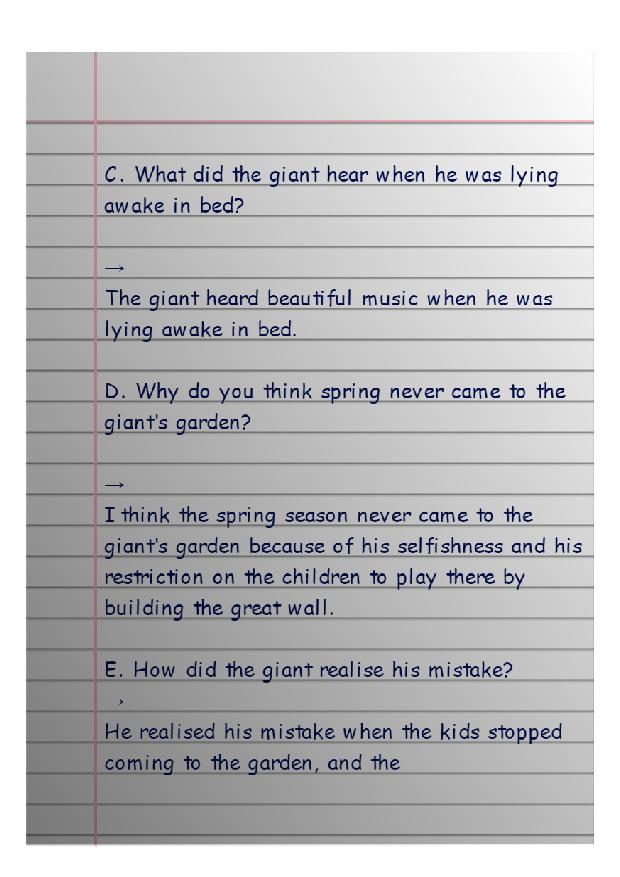


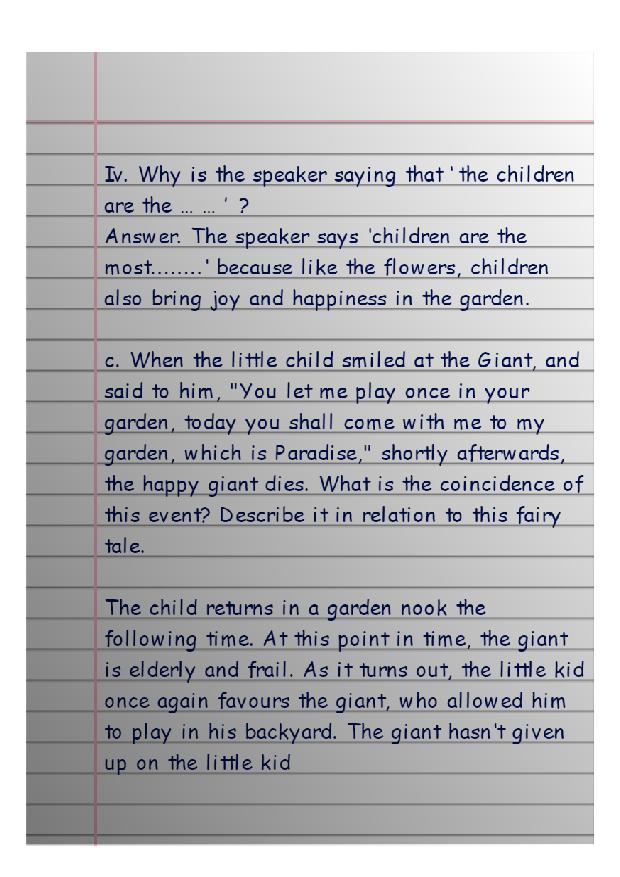
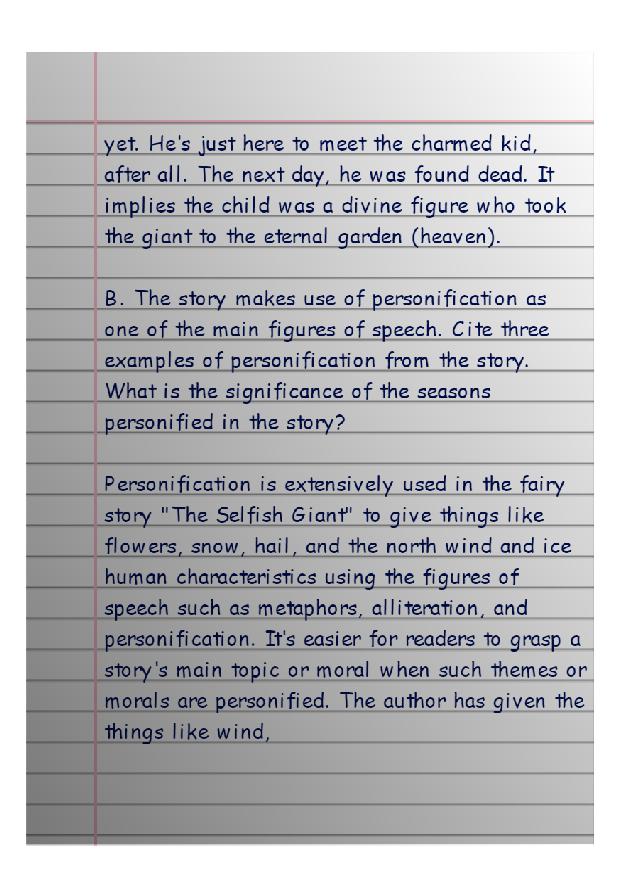

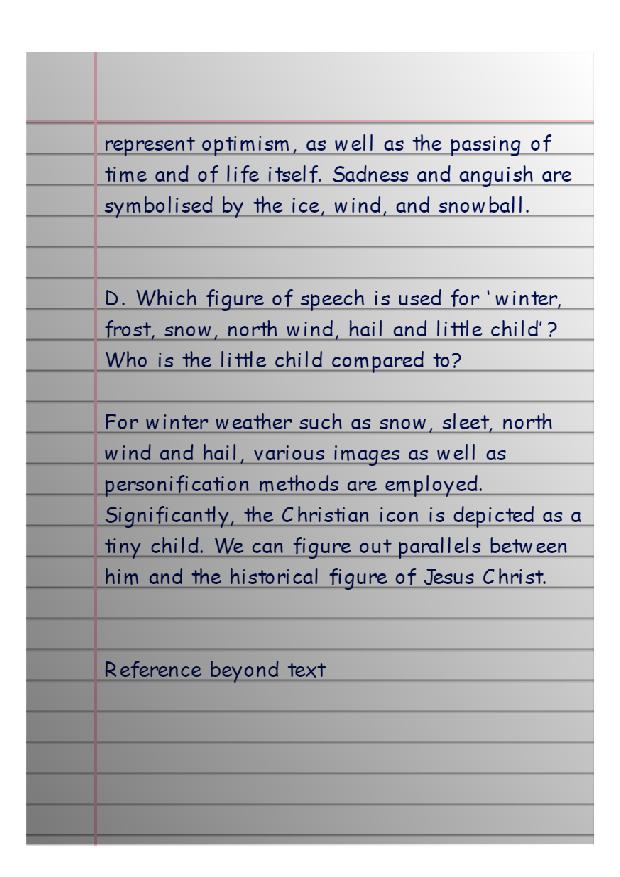



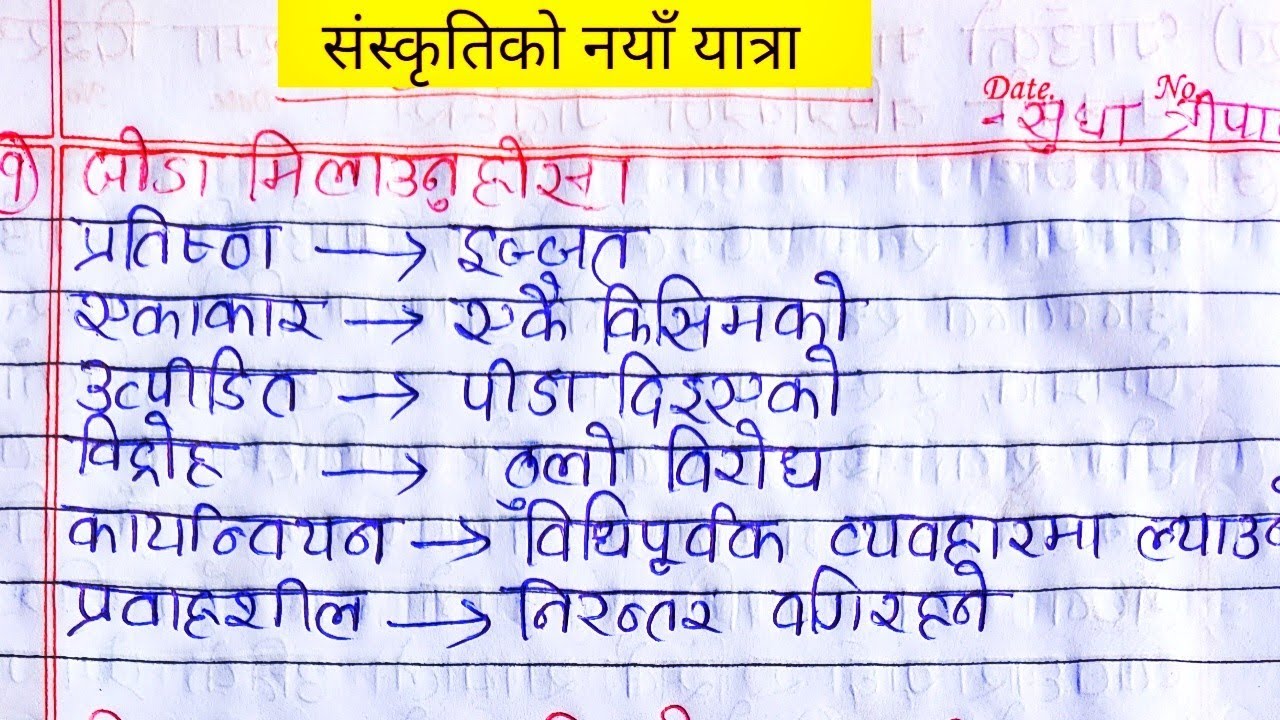

why is the speaker saying that the children are the most beautiful flower of all ?
ReplyDelete